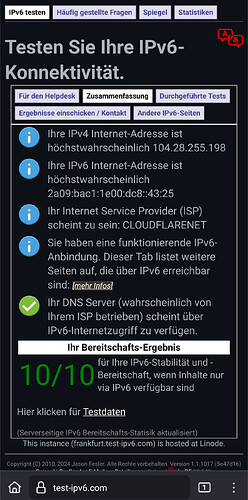Hello guys,
interesting conversation. Let me add my two cents…
Before I will tell you how I currently see things, I will have to add a disclaimer that I am indeed a big proponent of IPv6. Sometimes people on this forum tell me that I am not open to future technology and that is simply incorrect. I just see things a little bit more real sometimes than others. And it is the same with IPv6.
IPv6 as a protocol is great. It solves so many problems. But at the same time, it brings a thousand new problems with itself. I would argue, that IPv4 with NAT, smaller network topologies that can be “fixed” with a lot of hacks is more beginner-friendly and allows networks to “grow” - in the bad sense. With IPv6, you will have to have a plain, flat network plan and if you designed your network from scratch, you won’t have any problems rolling it out. The truth is rather that many company networks are a total mess and nobody wants to touch them.
Therefore, I personally have given up to drum up attention to IPv6. Our IPFire user base has been incredibly… well… disinterested in it in the past. Literally every single conversation I had with people was around “We will just wait and see until it is here, but that probably won’t be in my lifetime…” or “Nah, we won’t donate a penny for this, because we don’t need it”. In the commercial space, conversations are more formal, but between the lines, admins don’t want to hear about it - “We don’t plan to introduce IPv6 into our networks in the next five years”. For everyone who is running a business, saying five years means nothing else but never.
I know of some ISPs that have offered large corporations completely free internet connectivity (really large corporations) with the only caveat that it will be IPv6 only (or at least that IPv6 should carry the majority of the traffic). They were laughed out of the room and said company decided to pay millions rather than think about IPv6.
It is a nightmare for admins. It is not only some extra address space that you are gaining. You are building a second company network. Usually the one they have is difficult enough to manage already. Nobody is thinking about adding a second one on top without doubling their network team. Looking at the current job market, nobody is hiring such roles at all. Instead they are all looking for saving costs and getting rid of as many people as possible. But that is another story.
Everything will get more complicated if you are running an actual dual-stack network. You will have more things to check when debugging connectivity issues. You will have two sets of firewall rules (one for IPv6, one for IPv4). If you are using NAT a lot in a grown network, you won’t be able to have those little hacks with IPv6. You will need to get address space, you need to rely on your printers, phone, light bulbs, middle boxes of any kind, whatever else you might have to properly support IPv6. I don’t think that we are there, yet.
And so people rather choose to stay on IPv4, because they actually don’t see any problems. Everyone (seems) to have enough address space. Their admins know IPv4 well.
They can hack their way around it. Anything else would probably require a lot of thinking, network redesign and migration and in the end, your CEO will just watch the same YouTube video and not even see any difference. So who is going to pay for all of this? It is very hard to sell the benefits of IPv6 when it comes to money.
We will stay on what we have for probably much longer. This is really sad, but it is the reality. IPv6 networks get deployed where it is very easy to do so. Your guest WiFi, home networks that only have one large subnet and no firewall rules anyways, mobile networks. All those cases where you hand out an IP address using DHCP (which Android for example does not even support for IPv6) and let people access the internet without any further ado. More complex scenarios are not happening at the moment and people are fighting hard against it.
And last but not least, as long as there is a single website on the internet that only supports IPv4 (GitHub, Wikipedia, formerly Twitter, …, the list is actually really long) we will either have to roll out transitional gateway or simply accept that those won’t be reachable. I suppose the latter is not a real option, and so there is only one good option left: Keep supporting IPv4. But if we have to do that, why bother with IPv6 on top?
So in essence, you won’t have to panic at all. IPv4 is not going anywhere and IPv6 is not going to universally replace it any time soon.
If you want to see proper IPv6 support in IPFire, you know how to make that happen…
